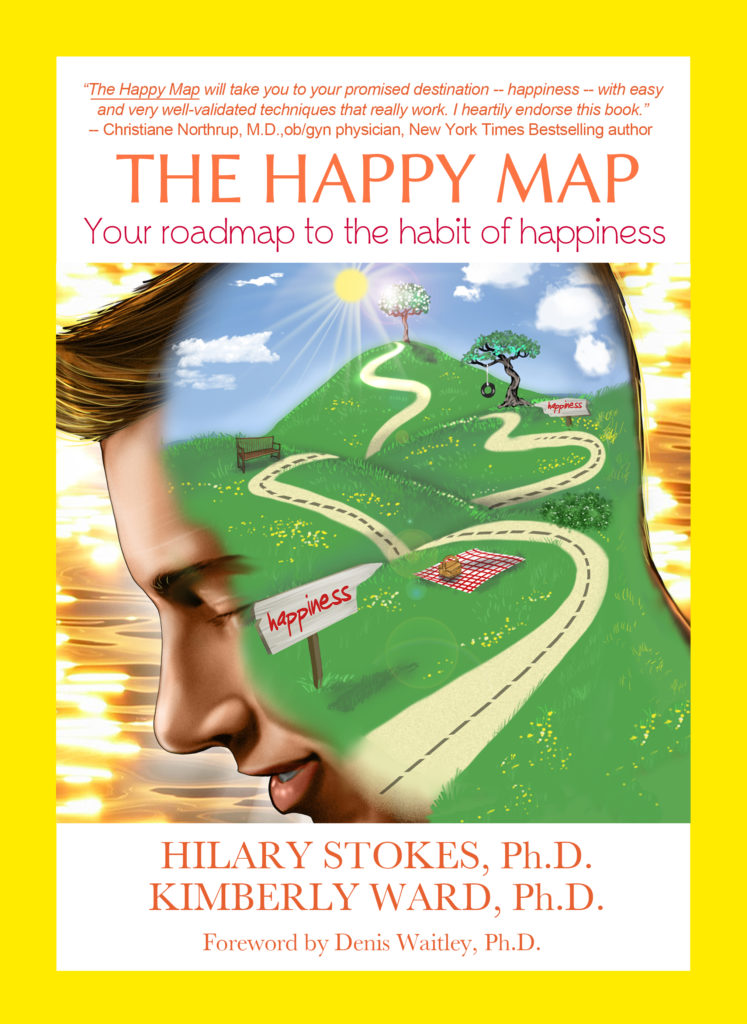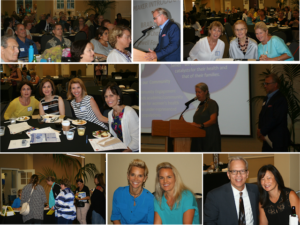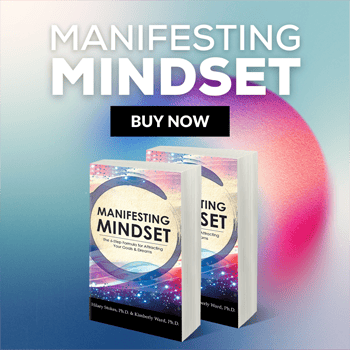We had the privilege to speak for the Doris Howell Foundation, an organization dedicated to women’s health research and education. What an amazing night! Check out a recap of the evening on their blog ‘The 4 things you can start doing TODAY on your journey to happiness’. howellfoundation.blogspot.com/2016/10/the-4-things-you-can-start-doing-today.html
Rewire your brain with The Happy Map Technique
Are you ready to rewire your brain for lasting happiness? The Happy Map Technique is a four-step strategy that transforms stress and strengthens your happiness muscle. It was designed with the science-based understanding of how you create neural pathways of happiness.
This includes five essential scientific advances:
- When you consciously diffuse stress, you rewire the tendency toward survival and negativity.1
- You can use your mind to change your brain and cultivate empowering beliefs.2
- You can activate the executive power of your emotions for optimism.3
- When you align with your strengths, you make positive decisions and take inspired action.4
- Neural pathways of happiness are strengthened via your thoughts, perceptions, feelings, emotions, and actions.5
The Happy Map Technique was developed to assist you in the three main areas that impact your level of happiness:
Decrease Your Stress Levels
Practice the Happy Map Technique anytime you feel stress or negative emotion. Each time you practice the technique you rewire the automatic tendency to react with stress or negativity while strengthening new neural pathways. Focus on an issue you’re feeling stressed about and go through each of the steps.
Increase Your Positivity
The Happy Map Technique will assist you to increase positive emotions such as joy, passion, and contentment. This is where you really gain momentum on your journey to lasting happiness. When you feel good and want to increase your clarity, focus, or positive emotion, we recommend that you engage in the Happy Map Technique. In doing so, you capitalize on your good feelings and strengthen your brain for these positive states in the future. Focus on an experience where you feel positive emotion and go through each of the steps.
Strengthen Your Mind-Body Connection
Each time you practice the Happy Map Technique you bridge the gap between mind and body and increase your sensitivity and conscious awareness. You will find that you notice stress far sooner and skillfully resolve it. For example, you might become aware that your shoulders are tense. This is a good time to practice the Happy Map to bring your mind and body into a state of balance and awareness. Whereas, had you not noticed this tension, your next signal might have been a headache or reaching for something sweet such as chocolate or wine.
Step 1: Breathe Diaphragmatically
The first step of the Happy Map is to breathe deeply. Breathing is the fastest and easiest way to decrease stress. This step initiates the security and presence required for plasticity. Many people aren’t aware that the way they breathe either increases stress or induces relaxation. Research has shown that most people breathe shallowly through their chest. This leads to a consistent lack of oxygen available for energy, mental clarity, emotional balance, and vital-organ function which in turn activates the stress response. Through a simple breathing pattern, you can decrease stress in just two minutes or less as more oxygen circulates through your body and brain.6
Practice
Breathe so that when you inhale, you feel your belly or abdomen rise, and when you exhale, you feel your belly contract or move back down. Allow this to be the rhythm of your breathing.
Step 2: Move Your E-Motional Energy
Connecting to emotion is one of the most important, misunderstood, and least developed skills. Of the five factors required to strengthen neural pathways, most people choose to change their perceptions, practice positive thinking, visualize desired changes, or create an action plan before they even considering managing their emotions. However, because of its executive power, speed of response, and pervasive subconscious influence, emotion is considered the missing link in your potential for positivity.
Bodymind Emotion
The sensations you feel in your body hold the key to unwinding stress and letting go of unresolved emotions. This is rooted in the understanding that sensory and emotional experiences are recorded into memory first; thoughts and perceptions, second. This is a significant neuroscience finding that helps us understand the limitations of purely thought-based approaches. This is further rooted in the understanding that e-motions are by nature meant to move us toward or away from something. When we suppress our e-motions instead of moving them, we can feel stressed, tense, contracted, anxious and depressed and more.
Body Sensation
Riding the wave of your emotional energy is rather unorthodox and revolutionary when compared to traditional approaches. However, it is a powerful way to regain homeostasis and benefit from the strength of a balanced system. This is especially true when you understand that expressing your emotions involves releasing pent-up stress in the body. Your body sensations are the vehicle that channels this energy. As you tune in to your body sensations, they reveal how you’re feeling physically and emotionally. These sensations are described as tense, tingly, light, heavy, soft, smooth, hot, cold, rumbling, pressure—just to name a few. As you feel these feelings while accessing your internal resources of security and presence, you successfully express your emotional energy. Over time, these sensations begin to shift, change, and move into greater levels of expansion. They intelligently and organically guide you into releasing any unresolved stress and bring you into greater homeostasis. As you move from contraction to expansion, you feel lighter, relieved, and freer while opening the door to lasting happiness.
Practice
While continuing to breathe diaphragmatically, turn your attention inside and connect with your body. Move your e-motional energy by focusing on the area of your body currently holding your emotions. You might bring to mind an issue you are feeling challenged by or simply notice an area of your body that feels contracted as you scan your body. Sink your awareness into this area. You may notice sensations such as warmth, pressure, tingling, heaviness, tension in one or more areas. Do your best to stay out of your head, thoughts or narrative of why you feel these sensations and just focus on your body sensations. Breathe consciously and deeply in and out of this area. On your exhale, consciously focus on softening, moving or releasing the sensation. Take five to ten deep breaths or until you feel a sense of relief. It may take some patience, but with practice, you will be available to experience greater body-mind connection.
Step 3: Choose Your Mind-Set
My experience is what I agree to attend to. Only those items which I notice shape my mind.
— William James
Now that you have experienced the releasing effect of emotional movement, you will gain access to the real power of your mind to rewire your brain. From this place, you’re primed and ready to work with your mind-set. Most people start here and bypass the important steps related to diffusing the stress response and expressing e-motion. Yet, only after you release the neural hijacking from stress, do you gain full access to the benefits from your thinking mind.
Whatever thoughts or feelings you hold in your mind activate neural pathways. Your brain doesn’t understand how not to think about something if you have activated it. You can’t tell yourself not to think about getting fast food on the way home or to stop thinking about the argument you had with your spouse. By telling yourself what not to do, you have introduced the issue to your brain’s neural pathways. Consequently, the quality and tone of the questions you ask are important. To create neural pathways of happiness, ask questions that focus your mind in a positive direction. Empowering questions take into account what is positive or of value in the current situation. They empower your mind to seek out the solutions or what is working instead of the problems and what is not working.
Practice
Steps to empowering questions:
- Identify what you want to experience in a particular situation.
- Formulate a question or statement of inquiry that focuses on helping you experience what you want.
Here are several empowering questions you can ask in most situations to rewire your brain for happiness and bring about positive results:
- What can I control in this moment? (If any thoughts emerge regarding others, the past, or the future, then ask again!)
- What do I appreciate right now?
- What is the most empowering action I can take in this moment?
Once you have set your mind on a thought that feels good, focus on thinking this thought as you move on to Step 4.
Step 4: Focus on Your Strengths
Now that you have chosen your empowered mind-set, you’re ready to take inspired action. To assist you with this, we turn our attention to your inherent resource for leveraged power—your strengths.
One of the foundational steps to increase happiness comes from positive psychology. Positive psychology focuses on what is working or what is right with you, not what might be considered wrong. It’s the scientific study of the strengths and virtues that enable individuals and communities to thrive. A primary building block of positive psychology has been the discovery and development of 24 core character strengths that we all possess in varying degrees. Identifying your core strengths represents the first attempt on the part of the research community to identify and categorize mental wellness instead of mental illness. Identifying and applying your strengths is one of the most powerful ways to increase happiness. In fact, research has shown that engaging in your strengths for as little as one week can increase your levels of happiness and decrease depression for up to six months. These are extraordinary results. Applying your strengths has also proven to increase resilience to stress and motivation to change undesired habits.7
Strengths reflect your internal values in action. Based on research, strengths are universal and are found in the most remote cultures and lands. Here are some questions to help you identify your strengths:
- What do you do well?
- What do you enjoy doing?
- What do others say you excel in?
- What are your gifts?
According to the Character Strengths and Virtues Handbook, there are 6 categories of virtues and 24 character strengths. 8
Virtue: Wisdom & Knowledge
Strength: Creativity/innovation, curiosity, love of learning, perspective, judgment/open-mindedness
Virtue: Courage
Strength: Bravery, persistence, honesty/integrity, zest/vitality
Virtue: Humanity
Strength: Love, kindness, social intelligence
Virtue: Justice
Strength: Teamwork/citizenship, fairness, leadership
Virtue: Temperance
Strength: Forgiveness and mercy, humility, prudence, self-control
Virtue: Transcendence
Strength: Spirituality, appreciation of beauty and excellence, gratitude, hope, humor15
Strengths test online: You can also take a strengths test online for free: https://www.authentichappiness.sas.upenn.edu/, under the title VIA Survey of Character Strengths. This website is part of the Positive Psychology Department at the University of Pennsylvania, which is directed by Martin Seligman.
Practice
- Apply one of your top strengths to your present moment situation for inspired action.
- Use your strength to assist you to focus on your chosen mind-set and any actions needed to follow through on this empowered mind-set.
- Engage ownership, passion, and motivation to fully apply this strength.
- Choose to think, feel, and act in accordance with this strength.
Click here to check out The Happy Map book and learn the roadmap to rewire your brain for happiness.
Hilary Stokes Ph.D. and Kim Ward Ph.D. have been a team for 20 years, specializing in mind, body, spirit psychology. They are the authors of the bestselling books The Happy Map: Your roadmap to the habit of happiness and Manifesting Mindset: The 6-step formula for attracting your goals and dreams and founders of Authenticity Associates Coaching and Counseling. They are passionate about combining the best of holistic and traditional approaches to health and happiness.
References
- Hanson, R., & Mendius, R. (2009). Buddha’s brain: The practical neuroscience of happiness, love, and wisdom. Oakland, CA: New Harbinger Publications.
Perry, B. (2008). Memories of fear: How the brain stores and retrieves physiologic states, feelings, behaviors and thoughts from traumatic events. Academic version of chapter originally appearing in J. Goodwin & R. Attias (Eds.), Splintered reflections: Images of the body in trauma, (1999). New York: Basic Books.
- LeDoux, J. (2003). Synaptic self: How our brains become who we are. New York: Penguin.
Schwartz, J. (2003). The mind and the brain: Neuroplasticity and the power of mental force. New York: ReganBooks.
- Lynn, D., et al. (1995). Prefrontal cortex. American Journal of Psychiatry, 152.
Goleman, D. (1995). Emotional intelligence. New York: Bantam Books.
- Seligman, M., Rashid, T., Parks, A. (2006, November). Positive psychotherapy. American Psychologist, 774–788.
- Doidge, N. (2007). The brain that changes itself. Stories of personal triumph from the frontiers of brain science. New York: James H. Silberman Books.
Merzenich, M., Tallal, P., Peterson, B., Miller, S., Jenkins, W. (1999). Some neurological principles relevant to the origins of and the cortical plasticity based remediation of developmental language impairments. In J. Grafman & Y. Christen (Eds.), Neuronal plasticity: Building a bridge from the laboratory to the clinic (pp. 169–187). Berlin: Springer-Verlag.
- Jacobs, G., & Benson, H. (1996). Topographic EEG mapping of the relaxation response. Biofeedback and Self-Regulation, 21(2), 121–129.
Kabat-Zinn, J., Massion, A., Kristeller, J., Peterson, L., Fletcher, K., Pbert, L., et al. (1992). Effectiveness of a meditation based stress reduction program in the treatment of anxiety disorders. American Journal of Psychiatry, 149(7), 936–943.
Titlebaum, H. (1998). Relaxation. Alternative Health Practitioner, 4(2), 123–145.
Wells-Federman, C., Stuart, E., Deckro, P., Mandle, L., Baim, M., Medich, C. (1995). The mind-body connection: The psychophysiology of many traditional nursing interventions. Clinical Nurse Specialist, 9(1), 59–66.
- Peterson, C., & Seligman, M. (2004). Character Strengths and Virtues: A Handbook and Classification. New York: Oxford University Press.
Seligman, M. (2002). Authentic happiness: Using the new positive psychology to realize your potential for lasting fulfillment. New York: Free Press.
- Seligman et al., 2006.











